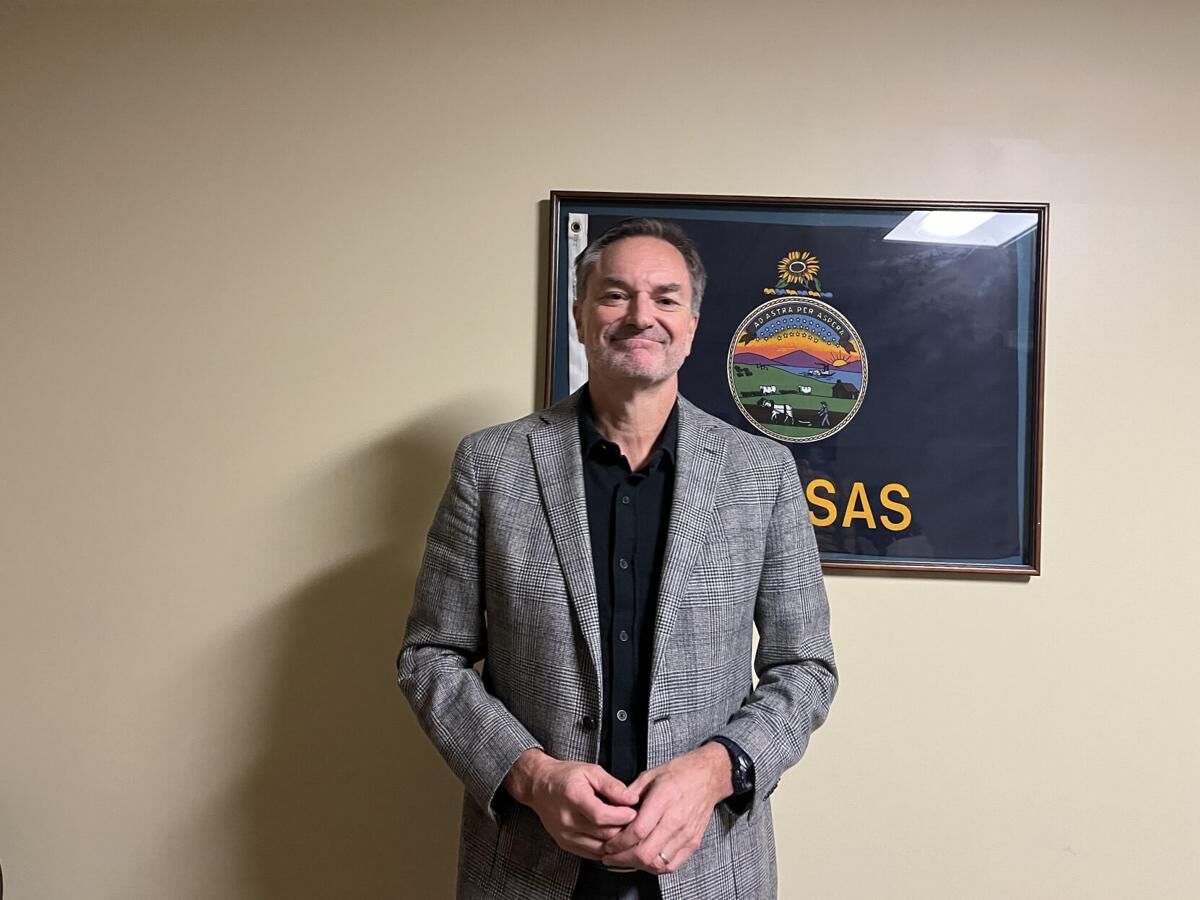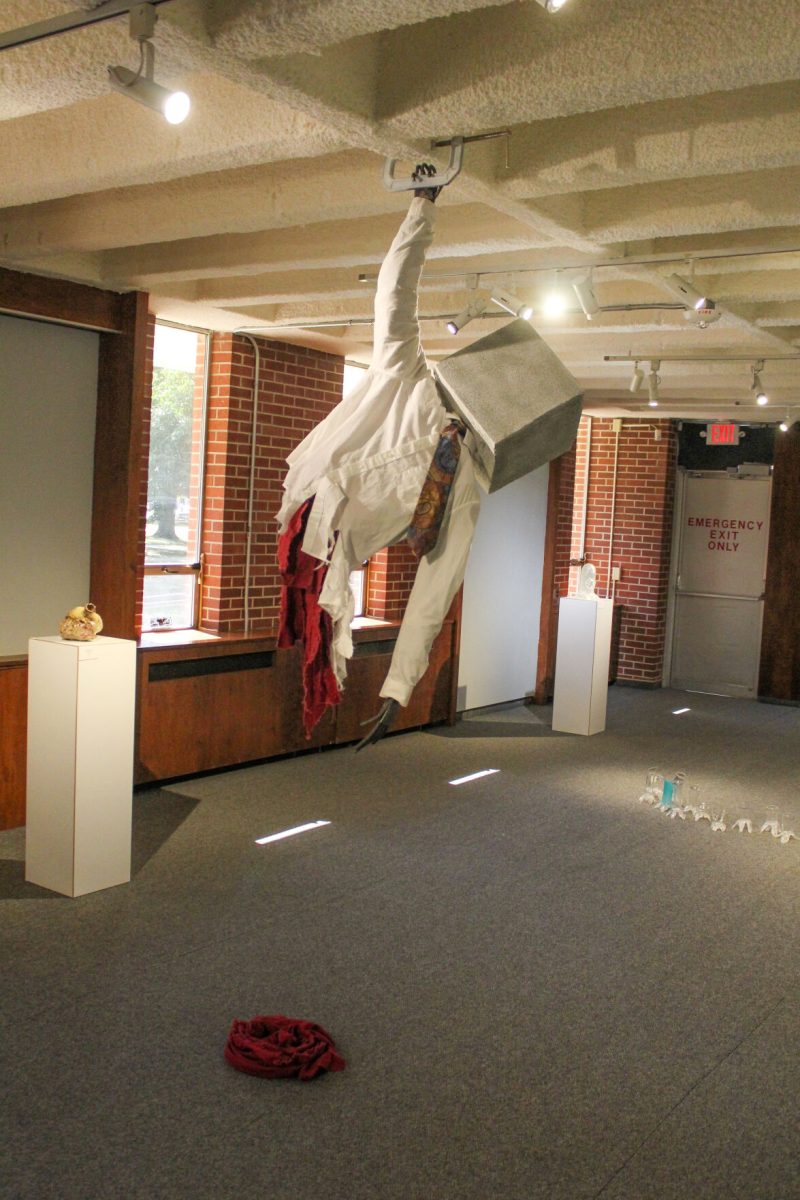A new fossil gifted to the Emporia State Johnston Geology Museum challenges the notion of a predator by showcasing what happens when the predator be-comes the prey. The new Xiphactinus fossil was donated by Kenneth Harlan, a longtime supporter of the museum.
The specimen tells the story of the large predator fish becoming the prey and its corpse being scavenged.
“I suspect it was attacked and a chunk was bitten out but not enough to break it in half or anything because it is all still sort of in the right position,” said Michael Morales, professor of earth science and the only paleontologist at ESU. “But all the ribs and vertebrae between the front and back end are jumbled so it looks like it got scavenged as well.”
Xiphactinus was a large bony predatory fish that used to swim in the shallow seas that once covered the western half of Kansas, 145-65 million years ago. A well-known Xiphactinus specimen is the “Fish-Within-A-Fish” at the Sternberg Museum in Hays, Kansas.
Both the “Fish-Within-A-Fish” and ESU’s Xiphactinus specimen were found in Western Kansas. The geology of this region makes it a prime area for finding cretaceous period fossils because the strata, or rock layer beneath the soil, of much of Western Kansas consist of sedimentary rock with chalk-like properties. The chalky strata erode after heavy rains, revealing fossils which can then be excavated, according to Richard Sleezer, professor of earth science and the chair of the department of physical sciences.
Apart from cretaceous period fossils, Harlan has also donated several pleistocene period fossils to the museum. Fossils found during this period include the mastodon and the giant ground sloth, which lived from about 2.6 million years ago to about 12 thousand years ago.
Melinda Dome, a graduate student of earth science, says that an easy way to find pleistocene fossils is by walking along riverbanks after a flood.
“Several fossils, both in our collections and on display, were discovered after people walked or kayaked along local rivers,” Dome said. “The fossils are often found coming out of the riverbank walls or on the ground, making them easier to collect than a dig site.”
The department of physical sciences is very appreciative to Harlan for his continuous support of the museum.
“We are very very grateful to Harlan for doing this,” Morales said. “He could have sold it on the market, but he chose not to. He chose to put it in a place that would be a repository forever for the future for scientists and lay people to enjoy. I think it’s amazing that someone is willing to do that and not succumb to the market value of the item.”





